How your brain constructs experience — 3. Leveraging awareness
Using awareness to improve the relationship to your self, others, and goal-oriented work.
This is the final part of the series “How your brain constructs experience”.
Part 1 laid out how perception gets constructed, deconstructed, and reconstructed as the body evolves in relationship to its environment. It can update itself based on reconciling prediction errors, or it can project itself into the world through action.
Part 2 looks at how the different elements of experience might interact within the predictive theory. Its point is not to perfectly capture real-world complexity, but step outside of the system and actually see its mechanics at work. It's high-level awareness that reveals leverage points, so we can be intentional with our experience and behaviour.
Relationship to the self
Relationship to others
Relationship to goal-oriented work
Part 1 modelled how baby brains mature.
At first, brains rely on sensations only to learn what (not) to do for health and survival. Caretakers help contextualise what these sensations mean in given contexts so the brain gains control and agency. I learn to be calm when my parents are calm and anxious when they are anxious. As we develop faculties for language, we come to conceptualise these sensations as emotions.
Over time, emotions solidify in a foundation of memory that enables the brain to start predicting more and reacting less, to save energy. Because prediction guides experience from what we already know, patterns of interpretation and habit become rigid intuition. We get used and attached to feeling, thinking, and behaving certain ways in certain contexts. The self emerges from these self-reinforcing loops of memory, habit and interpretation.
Maturation is inherently bumpy. We all get moulded by what we go through in life — good and bad. No matter how great your parents and childhood, you inevitably pick up some "stuff" along the way. From within the foundation of your self, this stuff may propagate into misguided cycles of interpretation and habit that consistently lead you astray.
People typically handle their baggage in one of two ways: they either shrink away or lean in.
Shrinking away leads to addiction — a habit of seeking short-term escape — and only feeds the destructive loops. Instead of dealing with trauma, we seek release in substances, consumption, relationships and/or cycles of resentment, anger and self-pity. Whatever it is, the object of addiction becomes a crutch, bound to eventually break under pressure.
Leaning in leads to growth. It is to check your self and deconstruct the pattern onto its root memory so the dysfunctional habit can be un- or re-learned from the ground-up. There is no way around trauma; it needs to be faced, interpreted and acted on for change. Every time we do that in a way that affirms life, we create a piece of ourselves that wasn't there before.
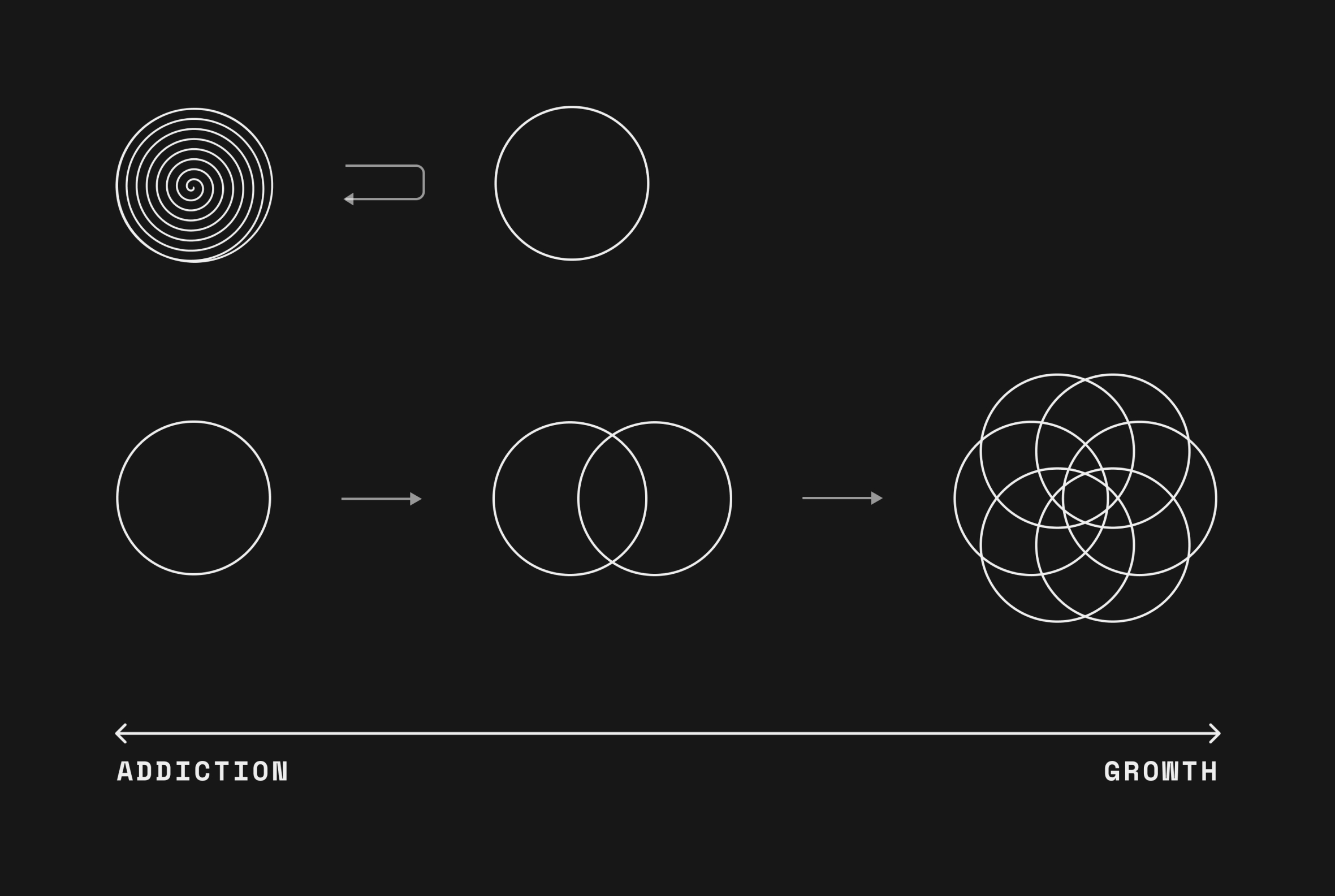
Shrinking away from trauma leads to destructive loops of addiction. Channeling trauma as part of who you are leads to growth and authenticity.
Nassim Taleb would call the first state fragile (harmed by disorder) and the second anti-fragile (gains from disorder).
To improve the relationship to the self, focus on thoughts and memory through awareness.
You can do this by introspecting destructive thought loops and tracing them back to the memories that trigger them. From memories, you can understand the root cause of your emotions. From there, you can do two things:
First, you can work on changing the habit from a re-interpretation of its underlying memory.
Second, you can change thoughts patterns by changing how you talk to your self.
The change of habit helps you deal better with the same problem in the future. The change of thoughts help you break out of the loop to start learning healthier ones.
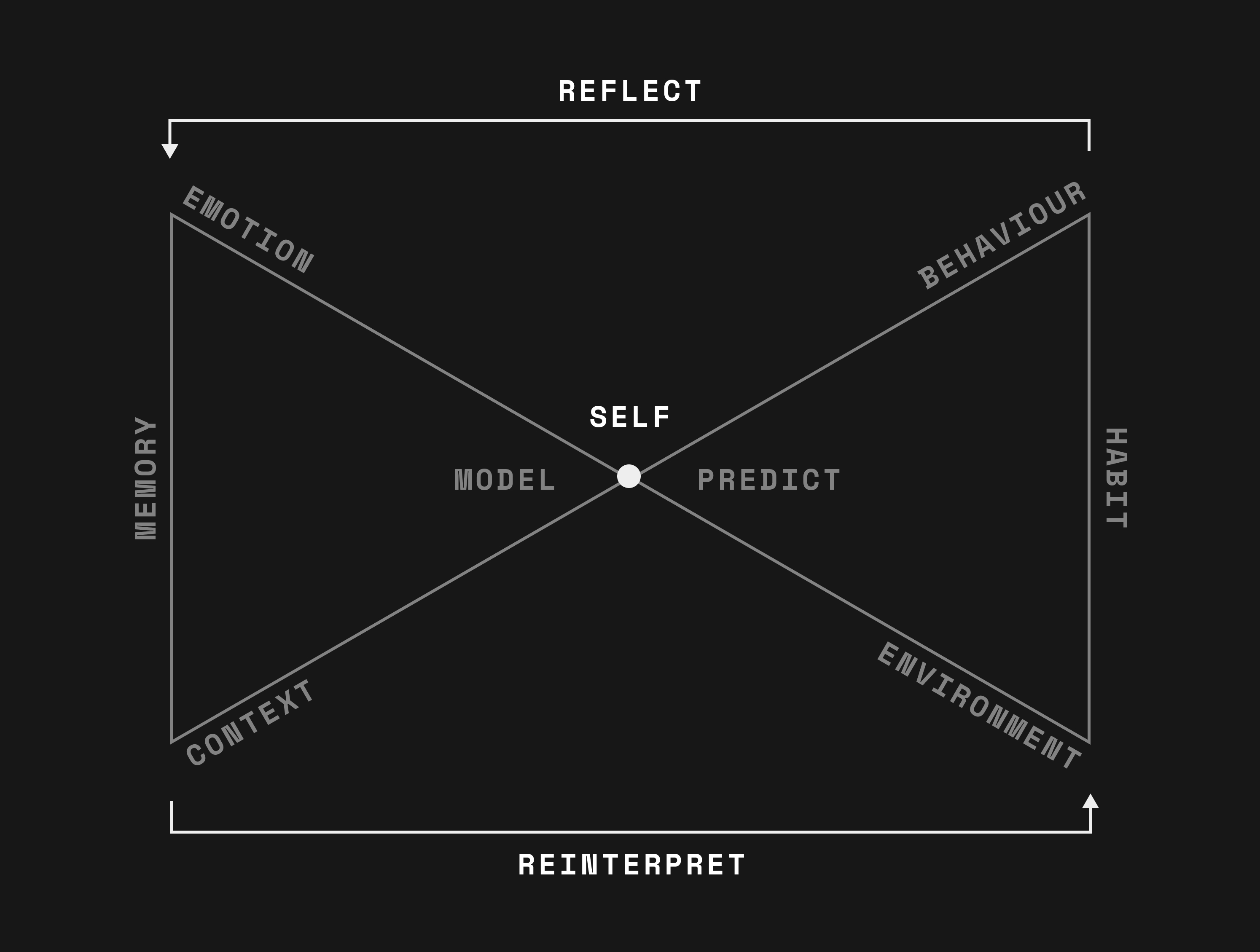
Mental maps modelled from memory guide habitual loops of prediction. Changing the habit starts from reflecting on and reinterpreting the memory at its origins.
It’s as important to forget as it is to remember. The past provides necessary continuity, but some chains of interpretation are better broken.
Awareness subjects prediction loops working in the background of the self to conscious thought so you can set intentions for changing them.
Intention is the hard limit of thought: change itself can only manifest through action. Without actualising them in new behaviour, new intentions just create new thinking loops on top of unchanged intuition. You cannot think your way out of thinking.
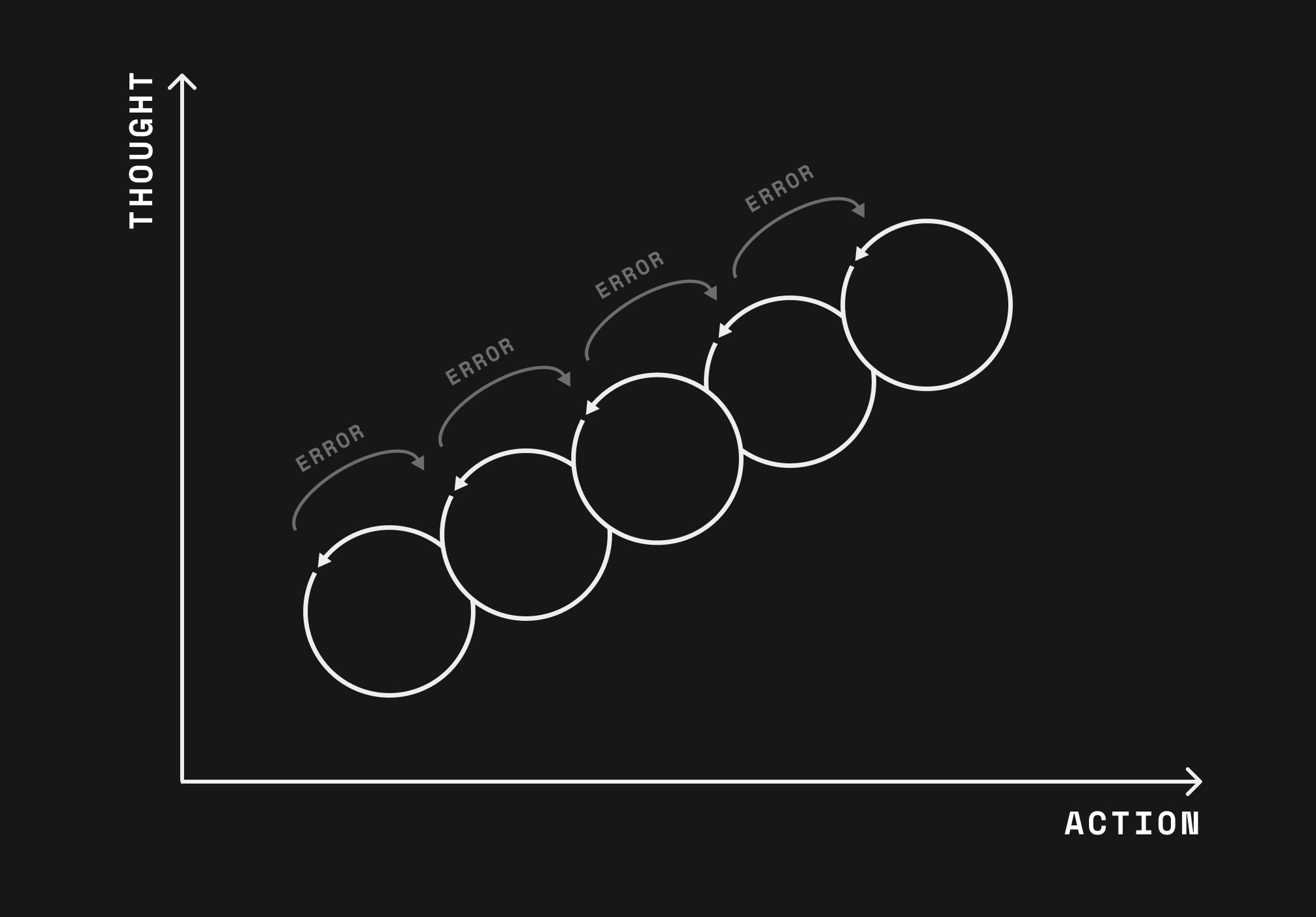
Thought can reflect on the self and set intentions for change, but that change can only actualise through action — updating internal models through prediction errors.
The brain updates internal models by correcting prediction errors fed back to it from the environment. It learns through new information that violates what it knows. Such novelty is only found doing new things in new contexts. You need to put your self out there to be proven wrong.
Change is hard because it requires payment of metabolic resources the brain was naturally selected to save. Thought can add the long-term perspective that learning pays compounding metabolic returns, as internal models gain greater predictive reach. You grow more effective in more contexts with less energy.
Change and learning becomes easier the more you do it.
Firstly, because knowledge compounds: existing knowledge provides greater contextual scaffolding for new knowledge to integrate with.
Secondly, because the brain comes to recognise the long-term metabolic gains of challenging itself and reorients its its energy efficiency model around it. To seek out novelty rather than avoid it becomes hardwired intuition. The more habitual your curiosity, the less intention and energy it takes, the more naturally it happens.
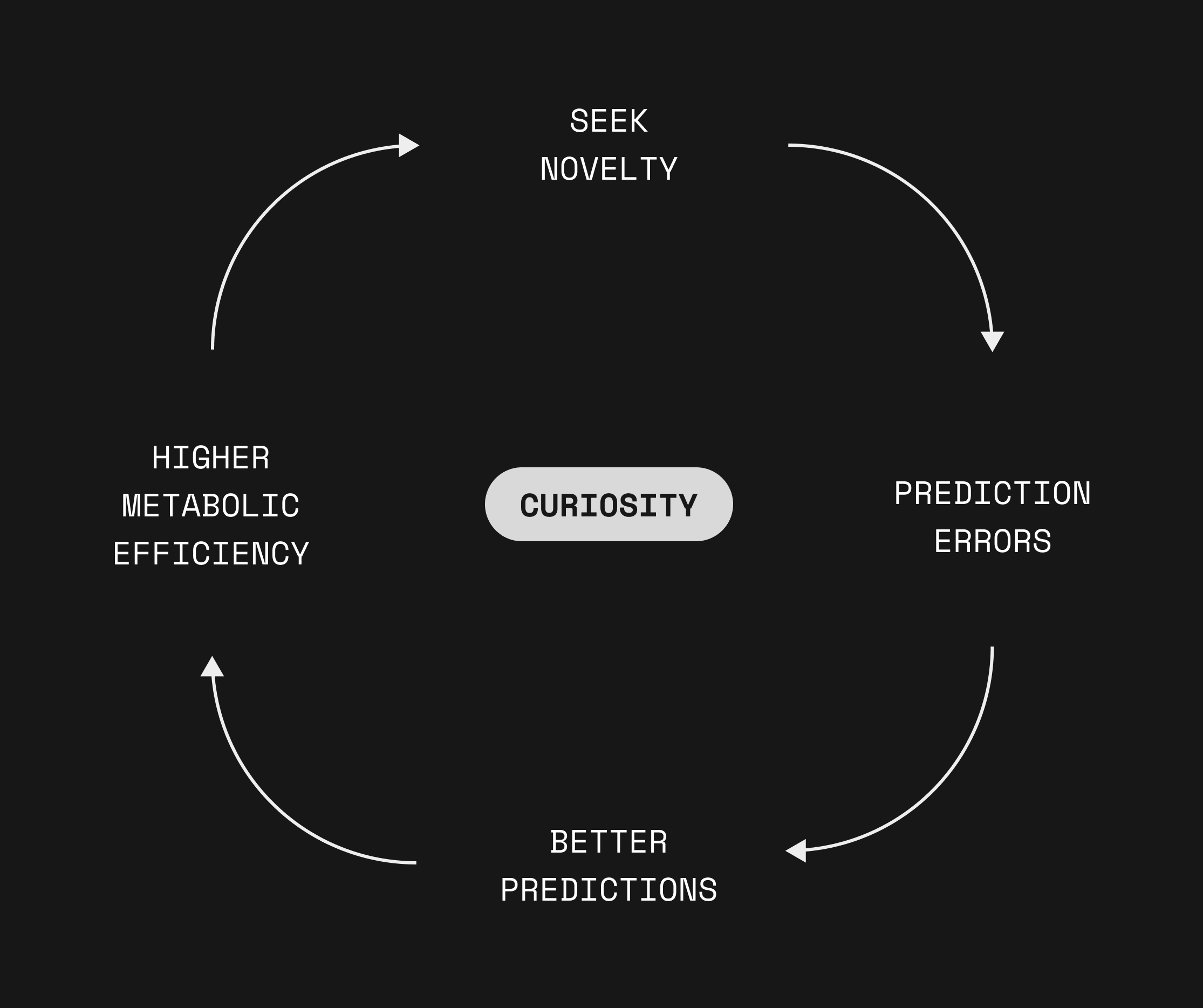
Curiosity scales interoperability of your prediction models across different contexts.
As your predictions compound reach, you feel comfortable in a wider diversity of contexts and have more energy left over for curiosity, actively seeking out prediction errors.
The flywheel gets flipped on its head. You dance with chaos rather than shy away from it. In the process, you evolve in complexity: more attuned to contextual diversity, more differentiated in personality.
In philosophical terms, intention carried by thought can be considered a source of free will.
Initially, our brains wire themselves to the surroundings they're born into — physical, social, cultural. You have, in fact, no say over the models and concepts you inherit. These determine your first predictions, experiences, behaviours and initial self-development.
As you grow up however, you gain agency over how, where and with whom you spend your time. What you pay attention to. Through awareness and intention, you can deliberately seek out new experiences, contexts, people, media and ideas so to evolve your internal models and the predictions they guide. The choices you make trace the path of who you become.
"Day by day, what you do is who you become." — Heraclitus
As the brain predicts from memory, your past determines your present. You can't change that past and who you are today, but you can change your present and, through it, who you become tomorrow. By being intentional in the present you can cultivate your past as a means to control your future.

You aren't responsible for the models you were given, but you are responsible for the models you have now.
To improve the relationship to others, focus on speech and behaviour.
People don't perceive your beliefs or intentions, only the output: what you do and say. Help them understand you better by choosing words and actions carefully. You can iterate this through awareness of the impact your words and actions have with others and how your intentions may be misinterpreted.
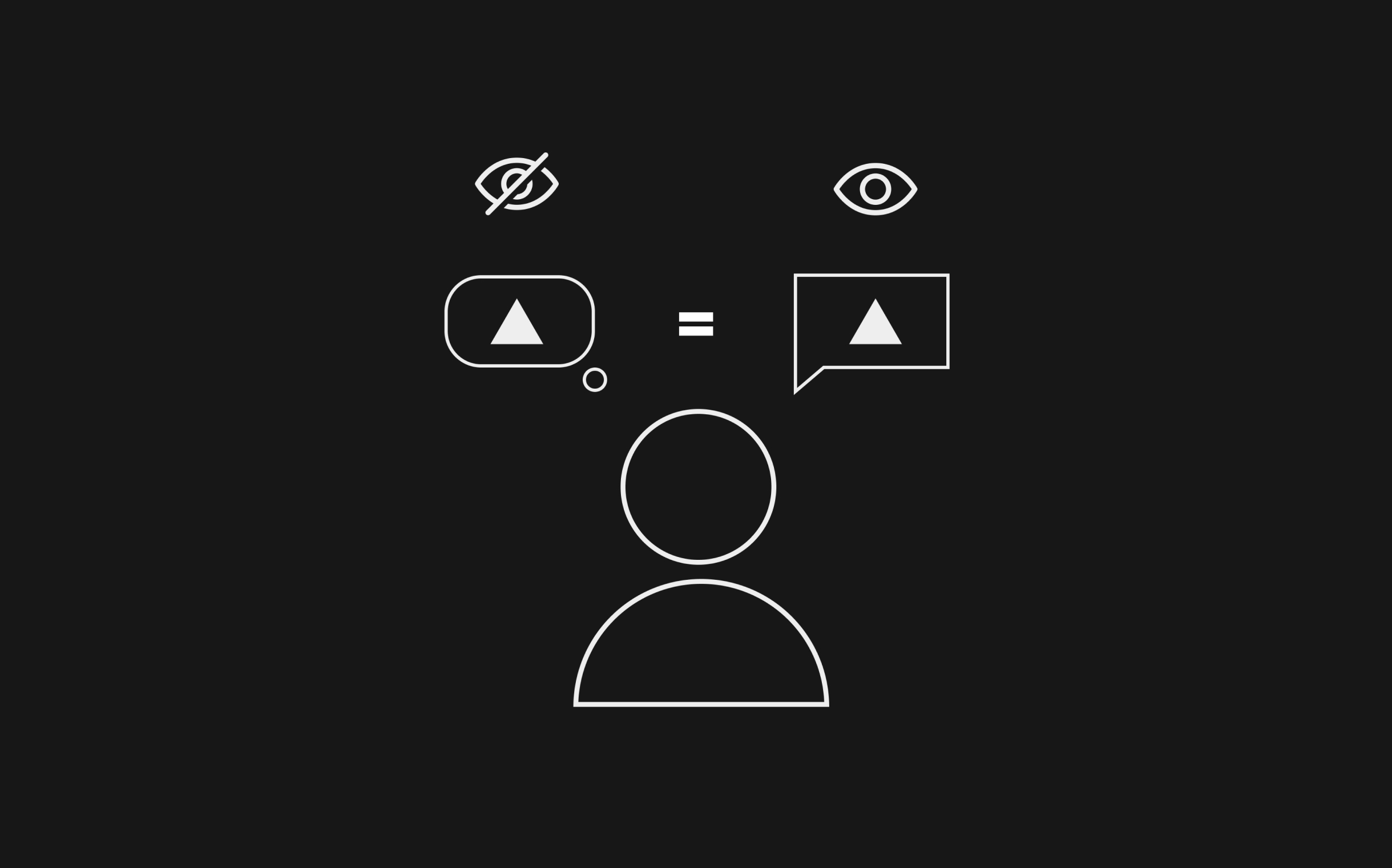
Make it easier for others to understand you by carefully aligning what is perceivable with what is not.
Through the lens of the predictive model, empathy is the brain inferring how someone else is feeling. It does this by anticipating and interpreting sense data (i.e. actions and words they see and hear) through the concepts it modelled from past experiences and what it learned from others, books, movies, and so on.
So, not only do people not see your beliefs or intentions, they are also likely to see your words and actions differently than you do, from their different internal models.
"If you'd understood everything I said, you'd be me." — Miles Davis
If two people don't have concepts to interpret certain sense data in terms of feelings, they might not "see" them at all, i.e. they are experientially blind to it.
The more different two people are, the harder it is for their brains to infer how the other is feeling — the harder it is to empathise with each other.
For example, on a Lex Fridman podcast, neuroscientist Lisa Feldman Barrett suggests children of colour in the United States are under-prescribed medicine by physicians not necessarily because they're racist, but rather because they are experientially blind to what they're feeling. Similarly, female patients are often misunderstood by male doctors — sometimes dangerously so. Different lives create different concepts construct different experiences.
"A person hears only what they understand." — Johann Wolfgang Von Goethe
Thoughtfully expressing outwardly how you feel makes it easier for others to empathise with you. It signals other brains sense information to sample and infer your feelings from, through their own conceptual maps.
Empathy is felt because your brain is literally constructing emotions: you feel as your brain understands how the other feels, from its own emotional concepts.
Since no two people are identical, one can ever only approximate what the other is feeling in their own way.
Open dialogue can bridge the gap, syncing each other's concepts through reflexive feedback. This requires genuine motivation from both sides, to understand and be understood. Better yet, to have one’s concepts understood, one also needs to other understand the other’s concepts so to be able to communicate one’s own concepts in terms the other understands. Effective empathy is a two-way street wherein brains meet each other halfway. In the process, concepts on both sides assimilate.
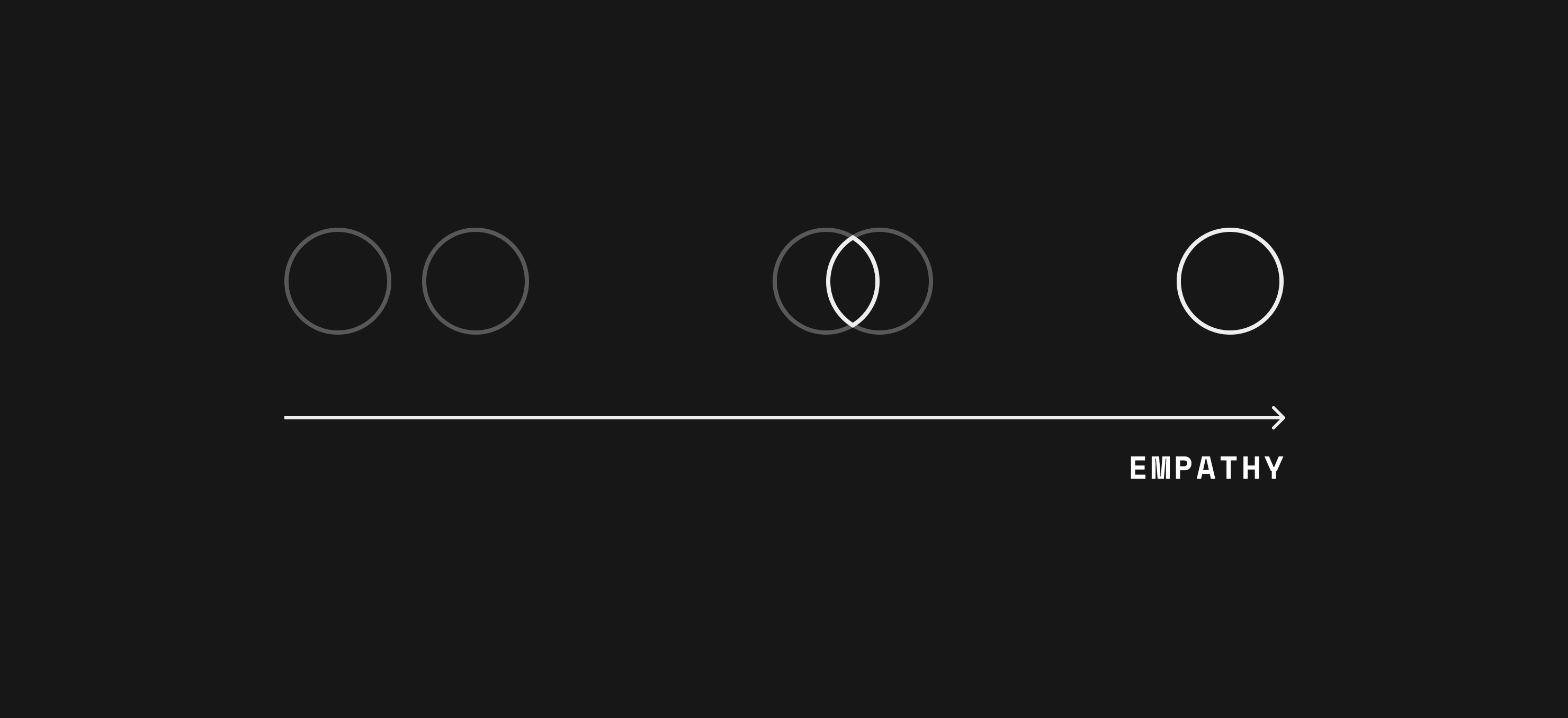
Through open dialogue, empathy assimilates concepts of two brains — enabling them to better understand each other.
Obvious as that may sound, remember concepts only update through prediction errors; something the brain by default prefers to avoid because of the metabolic tax. In fact, people often unintentionally mistake learning someone else's concepts (empathy) for trying to validate their own. Rather than trying to see the other, they themselves try to be seen.
Empathy only works when you care enough to pay the metabolic price of learning the other; to actively seek out where your concepts fall short to construct how the other feels (prediction errors) in open dialogue — enriching them in the process.
Why bother with empathy in the first place if it costs metabolically?
Your brain's job is to anticipate and meet your body's needs so you are at all times ready to act as you need to. It continuously makes predictions when to deposit, withdraw or invest bodily resources given the situation, e.g. can we relax, rest and replenish (deposit), should we release cortisol to ready the body for action (withdraw) or is it a good time to work out so the body grows stronger (invest)?
Your actions can only be as effective as your predictions. In novel and chaotic situations, your brain is forced to learn and pay a higher metabolic price. You may start to feel distressed and overwhelmed, typically a signal to withdraw to safe place like home where everything is predictable so you can rest and replenish.
But when unpredictability costs for too long, predictions become chronically mismatched, actions ineffective and body budgets mismanaged. Exhausted metabolic resources in turn impair the brain's predictive ability in a vicious cycle; less and less can it afford to learn from prediction errors and thus keeps repeating them. As distress and misguided predictions feed each other, unpredictability becomes ubiquitous to the point where you struggle to relax and replenish even at home.
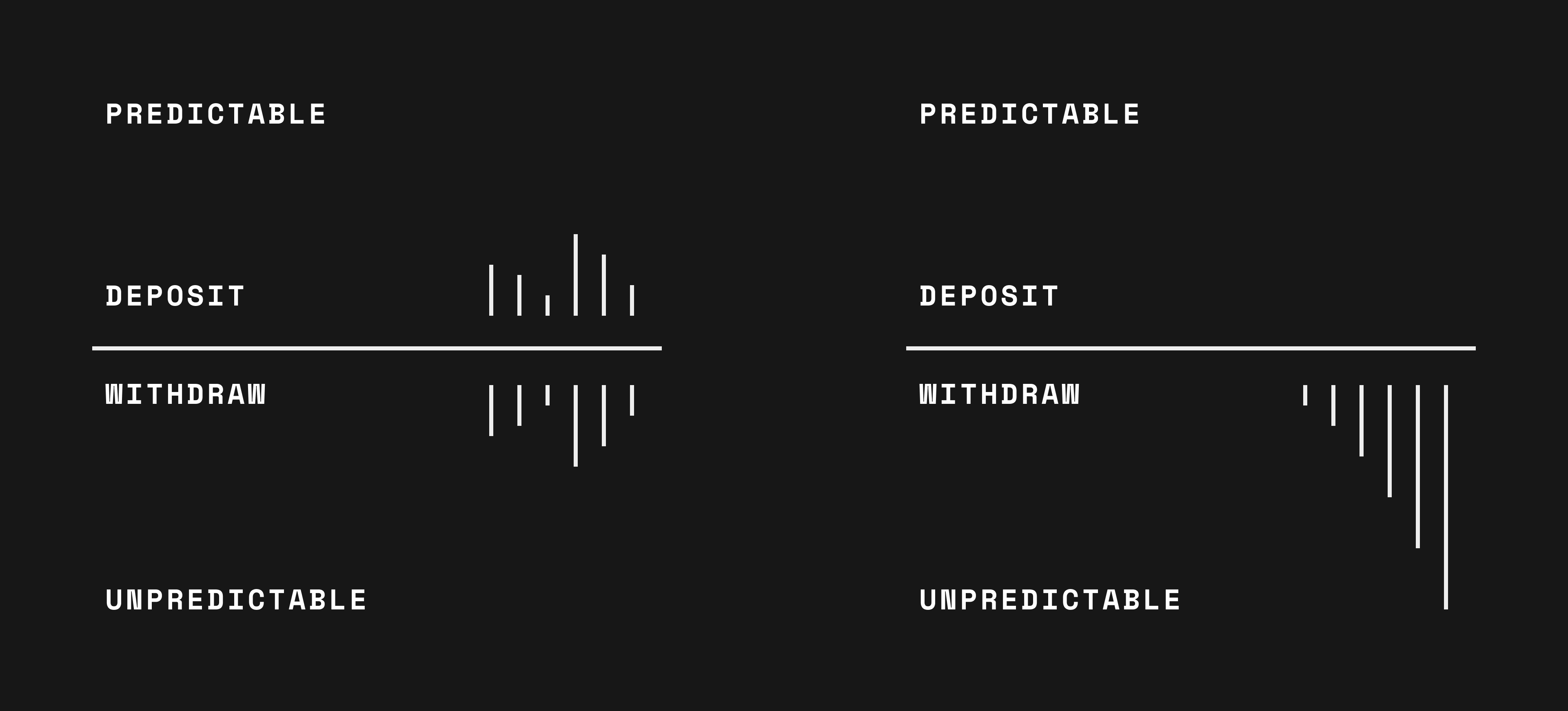
A healthy metabolic budget balances withdrawals and deposits. Chronic expenditure without refills impairs the brain's capacity to learn and predict effectively, exacerbating feelings of chaos and helplessness in a self-fuelling negative spiral.
Lisa Feldman Barrett proposes such a downward spiral of stress, metabolic depletion, misguided energy regulation and ineffective predictions as a way to think about depression and anxiety.
Framing depression as metabolic illness highlights the importance of of sleep, healthy eating and exercise. Where does empathy come in?
Your brain can rely on other brains to help manage its body budgets. Humans evolved to take care of each other's nervous systems. Empathy originates from caretakers guiding baby brains through the sensational sea of uncertainty. While parents take care of their children’s body budgets (feeding and protection), they also guide them how to map, feel and act in certain contexts and situations — shaping first predictions so they themselves learn to manage their bodies.
Even so we grow up to take care of ourselves, the people close to us still help relieve stress in much the same way. With empathetic words and actions (hugs), they help us make sense of uncertain situations — instilling us with confidence to resolve doubts (thought) through action. Knowing you’re not alone makes you feel safer and stronger. As such, the empathy of others lightens the metabolic load and co-manages your body budgets.
Think about the impact of a hug or even a simple WhatsApp message from a loved one has on how you feel — it regulates your nervous system. When your partner texts I love you, it changes your heart rate, breathing and metabolism. You feel this as affect, and conceptualise it as emotion. Same effect in the opposite sense when the message adds to uncertainty and is felt as anxiety, e.g. You are useless.
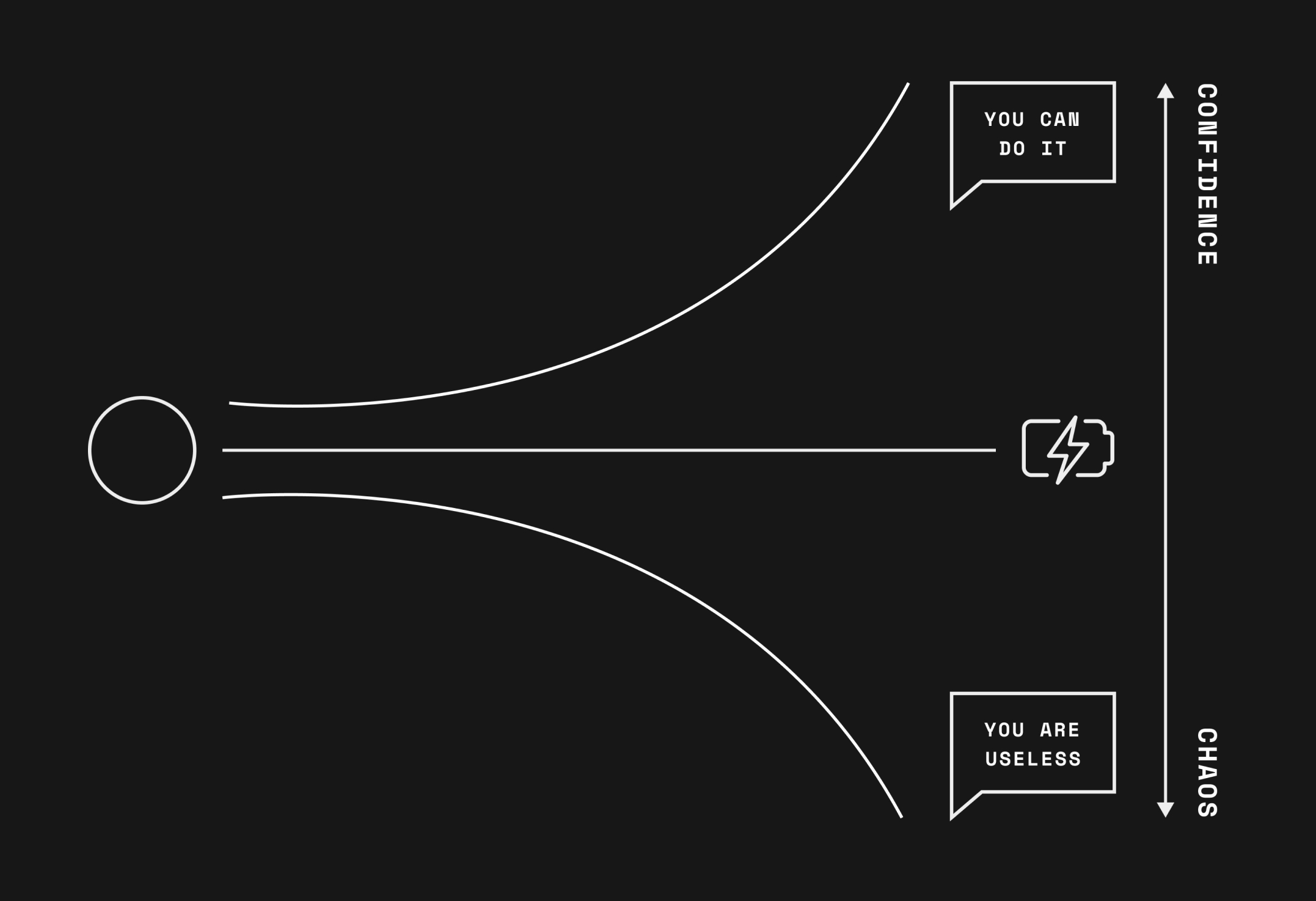
We regulate each other's nervous systems in interaction. Other brains escalate or calm your stress with words and actions.
In that sense, the best thing for a human brain is another brain. Inversely, other people can also majorly add to the chaos and uncertainty in our lives. And so, unfortunately, the worse thing for a human brain is also another brain.
It’s easy to see why we evolved as social animals. For most of history, survival and thrival odds were higher for individuals in groups. Empathy scaled from kin to tribe to community levels alongside the success of big groups working together. Nowadays most societies collectively solved food, shelter and security needs to the extent you can easily survive on your own. Yet, empathy still has clear biological advantages.
You can perfectly manage your nervous system on your own, but it'll metabolically cost you more. Dealing with life's inherent uncertainty all by yourself takes a slow but certain toll over time. So much so you’re likely to die sooner.
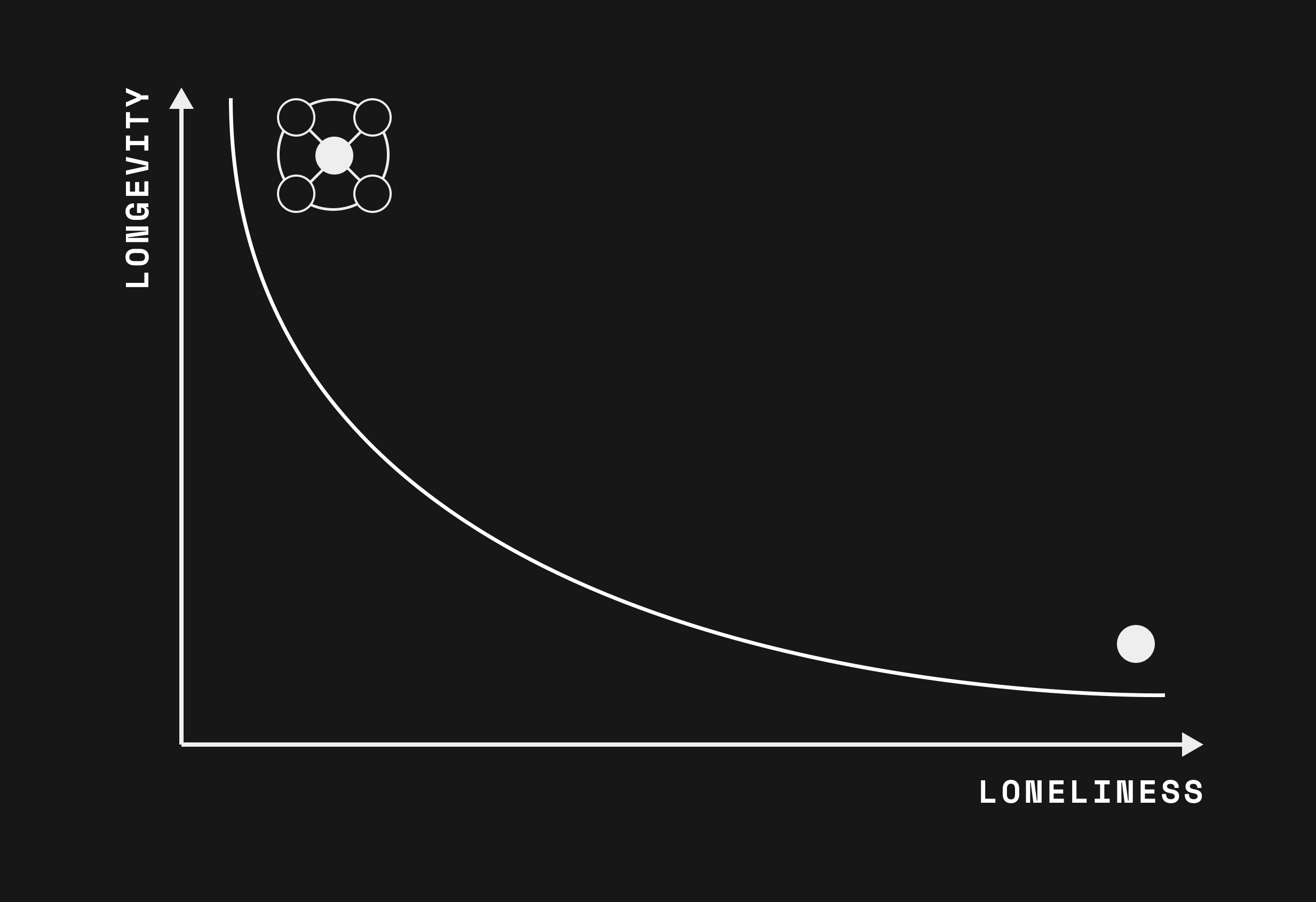
The biological advantage of companionship: others help lighten your metabolic load. People that take care of their body budgets all on their own are more likely to die sooner.
Many studies have replicated a negative causal link between loneliness and longevity. On average, people who are socially isolated, living alone or experiencing loneliness are ~50% (adjusted for age and gender) more likely to die earlier than people with close relationships — friends, lovers, and even pets. Along the same lines, the widowhood effect is the increased possibility of a person dying shortly after a long-time partner's passing. Losing the main steward of your nervous system devastates metabolic health, making you more vulnerable to disease. People literally die from a broken heart.
Losing a loved one is often described as losing a part of your self. That’s because, in fact, you have lost a part of your self. That someone co-managed your body budgets and was an inherent part of the concepts that make up your sense of self.
Biologically, empathy is a metabolic investment: it costs short-term but pays long-term.
In intimate terms, it builds a close circle of people that help manage your body budgets by reducing fundamental uncertainty in many ways.
On a larger scale, the bigger the diversity of people you invest to empathise with, the richer your concepts, the more of reality you know to navigate, the less uncertainty your brain has to deal with altogether.
Empathy works like a flywheel, too: the more people you empathise with, the easier it becomes (the lower the metabolic cost) to empathise with the next one. You grow in complexity in a dynamic, integrative way and are healthier off because of it. Though beware of empathising with others who don't empathise with you. Helping manage others' body budgets while no one helps with yours only adds stress.
We’ll consider productivity as the ability to actualise thought into action, imagination into result.
Prototypically, this happens through a runway feedback loop of thoughts producing actions that feed into new thoughts and so on.
The productivity process takes on a different structure in each uniquely different brain. We all develop our own habitual way of being productive, mirroring who we are as persons — the self. But while personal algorithms differ, the principle is the same: creating a straight path from thought to action.
Habits are great at executing tasks, but counterproductive for what makes work “great”: creativity. Quantity matters, but it’s quality that makes a difference. One is optimising existing ways for greater quantity (efficiency), the other is coming up with novel, better ways (effectiveness) altogether.
For productivity, linearity is both a strength and a weakness. The more you focus on increasing input-to-output conversion in the moment, the less attention is left for making new connections. True creativity is non-linear, born not out of focused but wandering attention. You can’t predict how it’s going to work beforehand and trace steps to it. It happens spontaneously and suddenly when intuition can freely play around in chaos — the very thing structure aims to minimise.

You've probably noticed how your best ideas come to you not when you’re trying to come up with them, but randomly in the shower, doing housework, gardening or taking a walk — precisely because you’re not trying to come up with ideas. It’s a relaxed, undemanding way of being that leaves room for intuition to self-organise the chaos, making non-linear connections.
We'll split the two dimensions of productivity as (1) goal-oriented work and (2) relaxed creativity, then marry them together in (3) flow.
To improve your relationship to goal-oriented work, focus on imagination and attention.
Define and simulate a vision, then trace actionable steps needed from future back to the present. This’ll instil a deeper certainty of what you want, to guide your predictions and actions going forward. Contrasting the vision of the future with the present channels your attention to purposefully learn new things as you co-evolve with the new reality you’re actualising. Your imagination pulls your attention to itself in an actionable way.
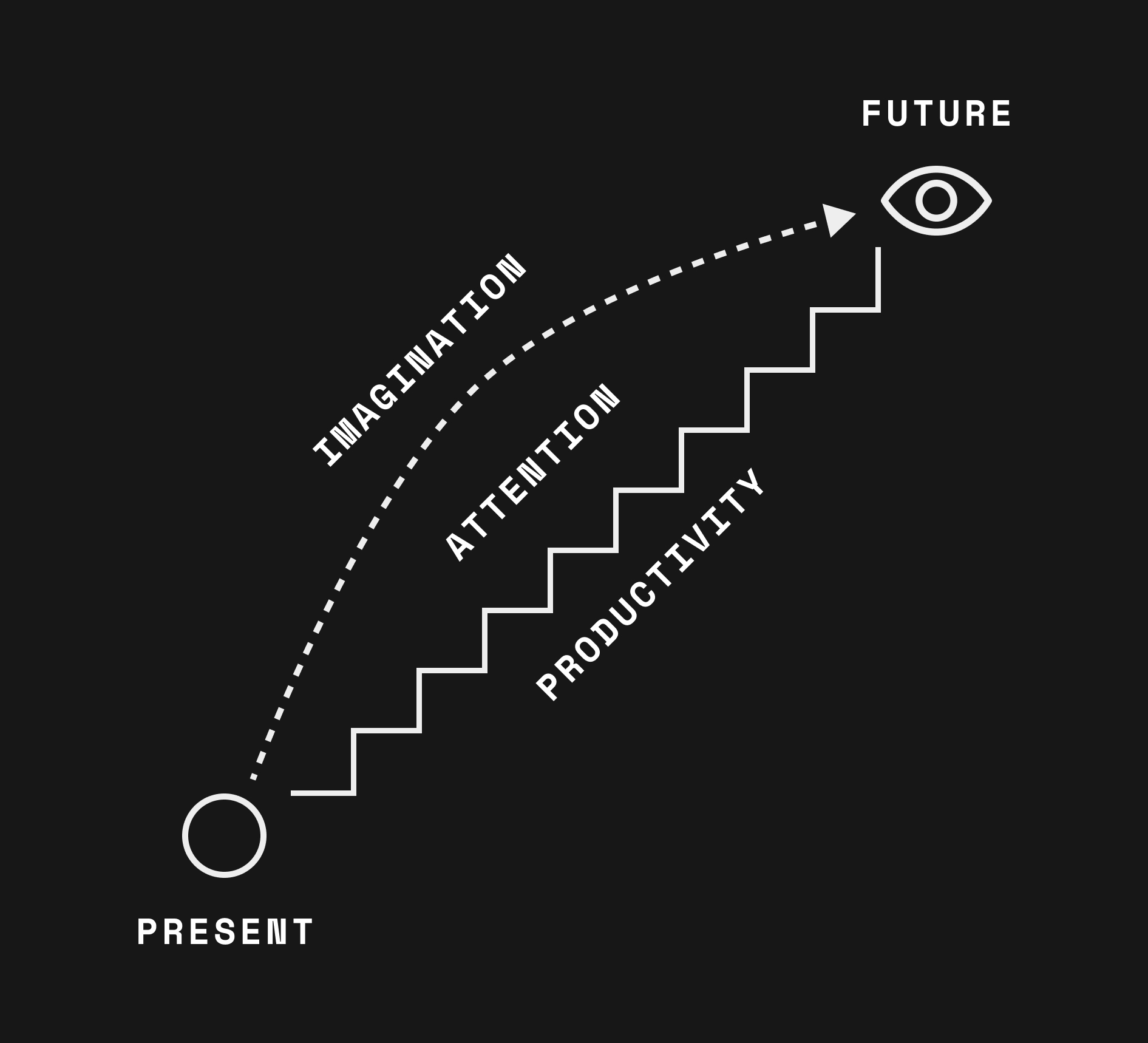
Imagination creates a vision that pulls attention towards itself within an actionable channel.
Now, goals are constrained within the channel traced back from your vision, i.e. the product of creativity. As you purposefully work and learn towards that vision goal by goal, you build creative capacity for a better one. To harness it, step away, out of the channel, and give your updated intuition a chance to make new non-linear connections by inviting relaxed creativity. You might come up with better ideas that bypass tons of linear work within the previous paradigm. Sometimes, the most productive thing to do is to not try to be productive.
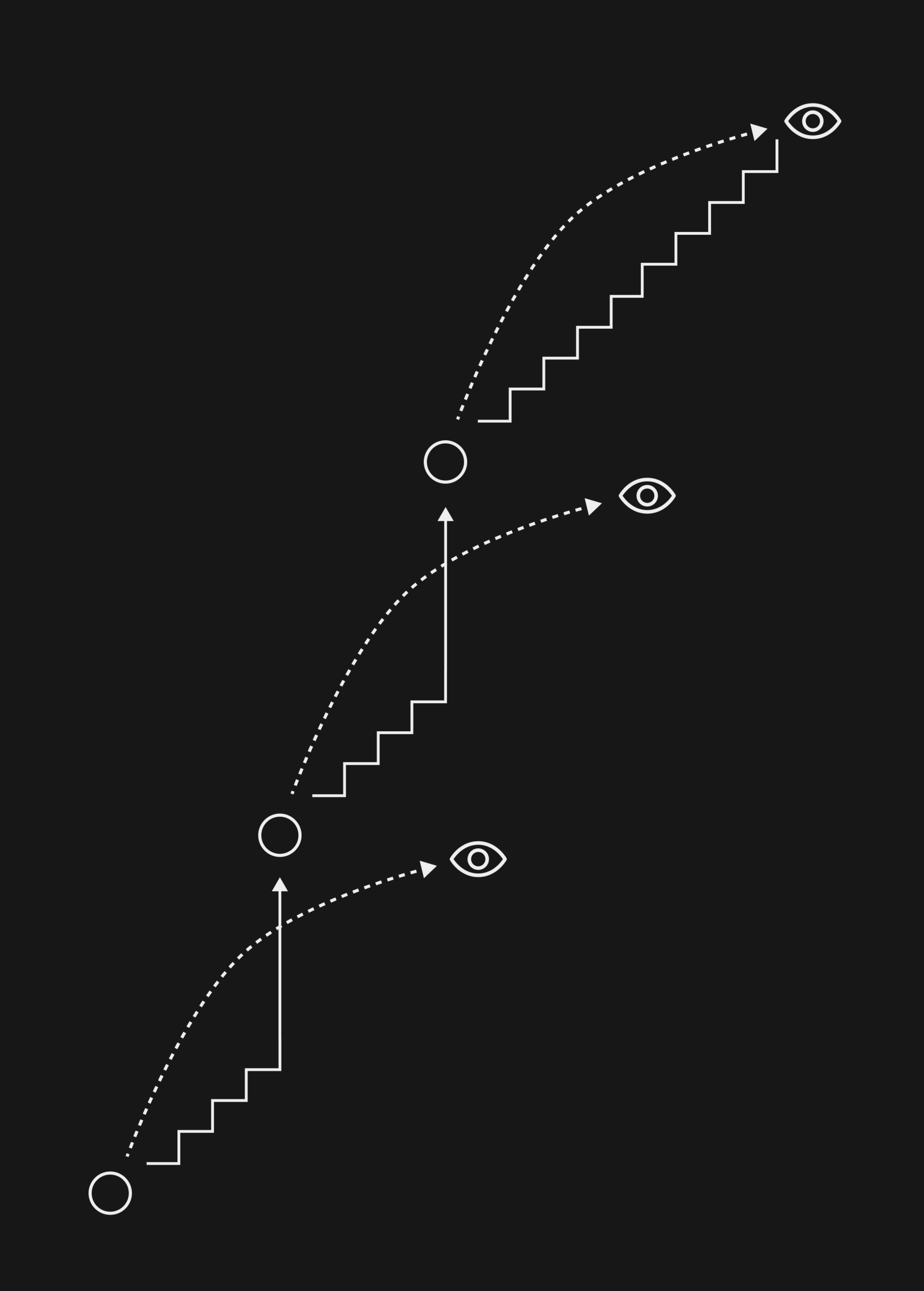
From time to time, step outside of the productivity channel so to creatively harness what you've learned into better visions.
To improve your relationship with relaxed creativity, focus on sensation and intuition.
Carve out purposeless pockets of time and space for your intuition to pick up new connections in new sensory environments. This is the opposite of goal-oriented work. Without goals (thought) commanding attention, the brain can freely chase novelty on top of what it assumes to already now. Through prediction errors, novel sense data non-linearly integrates with existing concepts, subjecting new ideas to thought as they evolve.
For example, I invite relaxed creativity through walks, showers, housework, cooking and gardening. These are activities the body can do without much thought, leaving attention to freely wander and pick up on novelty for intuition to play with.
Goal-oriented work and relaxed creativity are seemingly at odds with each other, as the first structures attention and the second diffuses it.
But there’s a sweet spot.
At the edge of order and chaos, we can achieve a flow state: a minimum viable structure that fends off ineffectual distractions while retaining enough room for intuition to self-organise chaos into creativity.
Flow is a magical sort of state, found out as the “optimal human experience” by psychologist Mihaly Csikszentmihalyi after decades of researching high-achieving people. In his words:
“Flow is being completely involved in an activity for its own sake. The ego falls away. Time flies. Every action, movement, and thought follows inevitably from the previous one, like playing jazz.” — Mihaly Csikszentmihalyi
Sitting at the edge of self (order) and selflessness (chaos), flow is felt as a total experience of the unfiltered present moment. It augments both emotion and thought, syncing them in the core unit of consciousness: attention. Whatever you are feeling and thinking feels much richer.

In flow, you choose what you pay attention to, not some distraction. You feel naturally happy without thought and grow in complexity, merely by virtue of being active towards where your mind is focused.
According to Csikszentimihalyi, flow comes when an activity feels both sufficiently difficult and sufficiently possible. If it’s too difficult, we get anxious. If it’s too easy, we get bored.
It’s also about the psychic energy we have available. What is difficult and easy changes throughout the day as our thoughts, feelings, moods, interactions and environments change — much of it subject to body budget levels (food, water, glucose, electrolytes, sleep).
Optimising for flow starts with matching your focus to the content at any given moment. If you have four hours, you sit down to write, but if you only have twenty minutes, you send emails. Better yet; if you don’t have the clearheadedness to write, you pick something that better matches your mood.
By proactively context-switching to match psychic energy with task, you become an architect of how you distribute attention to the environment. This process is conducive to creativity because it’s messy and non-linear, yet it still respects the output. It prioritises quality without neglecting quantity, and as such maximises productivity.
The challenge of flow is to create a structure that minimises wasteful distraction (goal-oriented) but not so much it can’t context-switch in function of available psychic energy.
This is where intrinsic personal goals come in. Goals not based on external rewards they bring, but on values that give you a sense of conviction about your place in the world. Such goals are an extension of your self and living them is, in fact, self-expression: the reward is the act itself.
For example, I write to think and learn better by indulging in my curiosity; hopefully creating meaning for and connection with others in the process. It is selfish self-expression more than anything else: something I naturally want to do regardless of the external rewards.
Value-based goals are habits at the level of belief: they trace a purposeful, dynamic scope for flow to happen at the level of experience. The balance is struck: enough structure for order while enough space for the brain to non-linearly organise its way through chaos. For this to work, you need to deeply feel and believe the goal. In some sense, bet your life on it.
As Csikszentmihalyi puts it:
“To overcome the anxieties and depressions of contemporary life, individuals must become independent of the social environment to the degree that they no longer respond exclusively in terms of its rewards and punishments. To achieve such autonomy, a person has to learn to provide rewards to themselves. They have to develop the ability to find enjoyment and purpose regardless of external circumstances.” — Mihaly Csikszentmihalyi
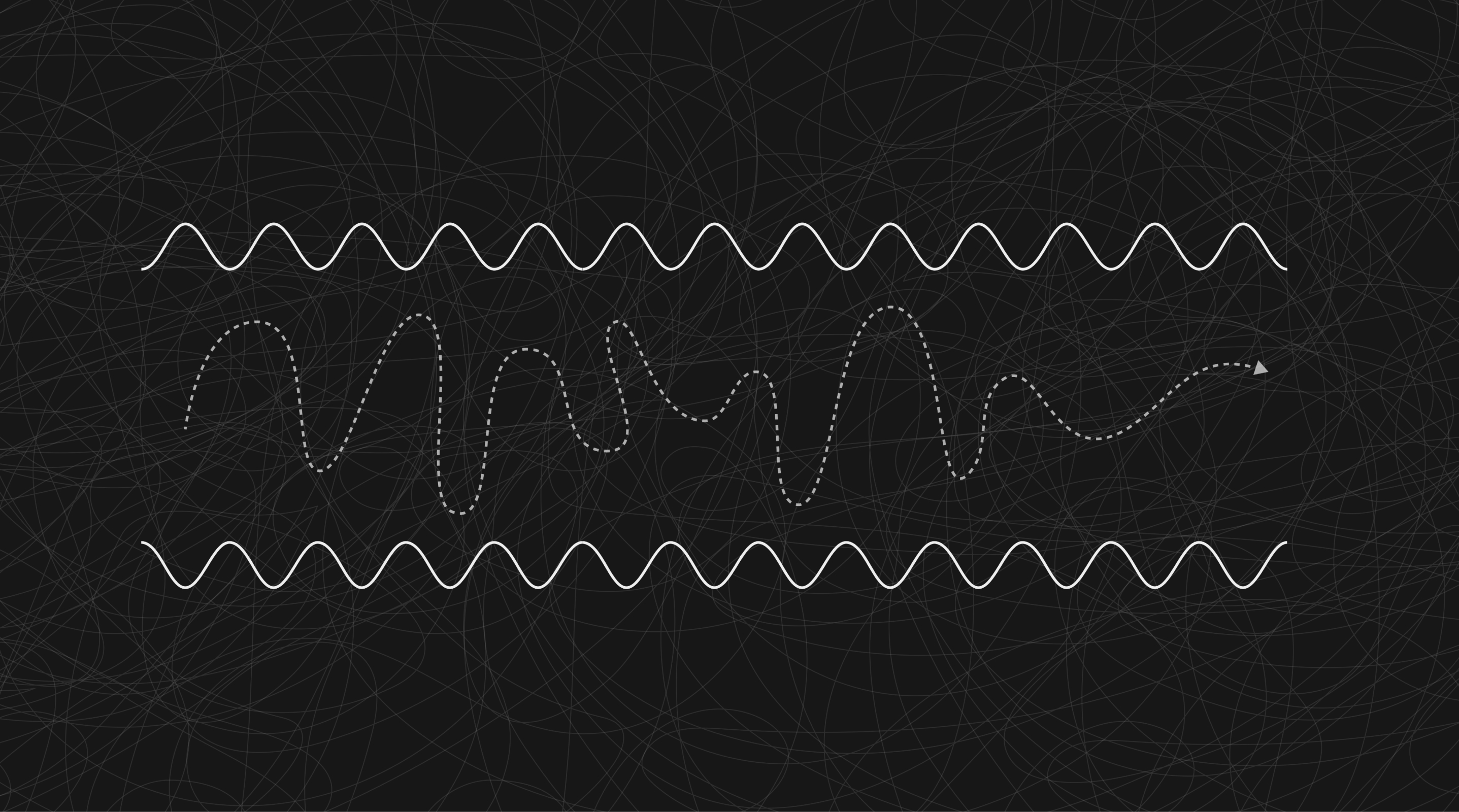
Intrinsic goals focus chaos around your self as you move through it. They trace a dynamic structure through chaos without reducing creative potential.
Writing is my scope and within it, I switch contexts to match my psychic energy levels.
In the mornings, I’ll typically sit down and actually write, surfing the creative flow following restful sleep.
When I feel stuck, I’ll step away from my desk to do some housework, shower, cook or take a walk — so to let my intuition play with ideas in the background of my wandering attention. Later, I'll come back to write with a fresh perspective.
As soon as I find myself forcing to keep writing, I’ll move on to more linear client work (I freelance) that pays the bills. This enables me more time to write later.
In the evenings, I’ll shift from creating to consuming, reading and listening to books (or podcasts) — possibly while walking or alike. More input for the mind to run away with and refill overall creative inspiration.
Throughout the day, I’ll optimise food (low-carb and fasting), activity (walking, workouts) and sleep (unwinding, rhythm) for clear thinking. I'll flow across all of these things within the purposeful scope of writing well.

Rather than goals being an end in themselves, they become a means to experience flow. As such, they marry the noun to the verb, the being to the doing.
Understanding how different elements interact to shape perception and experience is a powerful way to take control of your life.
The computer scientist Alan Kay once said:
"A change in perspective is worth 80 IQ points." — Alan Kay
That's what happens when we step outside our sense of self to update the assumptions that guide it in the world. Through awareness of its parts, we can better rhyme the flow of our internal systems with the reality and other brains around us — intentionally evolving in harmony as we go.
